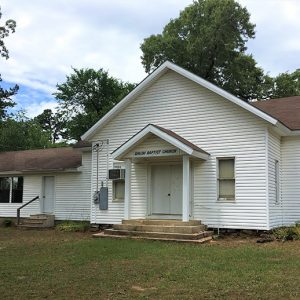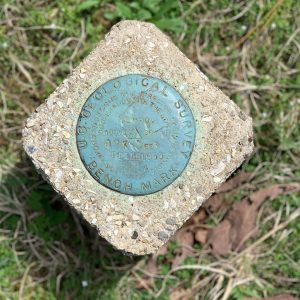calsfoundation@cals.org
Shiloh (Scott County)
Shiloh is an unincorporated community located in southwestern Scott County. Established about one mile west of the Nella community, Shiloh was likely named after the biblical place mentioned in Genesis. Agriculture and the timber industry have traditionally contributed to the culture and economy in Shiloh.
Prior to European exploration, the area surrounding Shiloh was a wilderness. Several species of wildlife that no longer inhabit the area, such as elk, wolves, and buffalo, were present throughout the region. Numerous archaeological sites and burial mounds can be found along the banks of prominent waterways such as the Fourche La Fave River. Archaeological findings have provided evidence of early inhabitants dating to the Archaic, Woodland, and Mississippian periods. Further archaeological evidence has indicated that the people of the Caddo tribe later inhabited the area.
Throughout the late seventeenth and early eighteenth centuries, French trappers and explorers traveled west from the Arkansas Post along the Arkansas River. From there they began traversing smaller tributaries such as the Fourche La Fave River. It is possible that they traveled through the area where Shiloh is now located. There are also stories of Spanish exploration in the western portion of Scott County, although they cannot be substantiated.
Settlers began arriving in the area near Denton by the late 1820s. The area continued to be settled from the 1830s to the early twentieth century. Most families participated in a wide variety of agricultural practices. Land patents were given to early settlers, including C. C. Bruton (1848), Aaron Gist (1850), Michael Pittman (1851), and James P. Blansett (1856).
During the Civil War, men from Shiloh were called fight for both the Union and the Confederacy. Women, children, and the elderly were left to look after crops and homesteads. Bushwhackers were active in the area, often stealing crops and livestock. After the Civil War, settlers from various war-torn regions of the South moved into the area.
In 1872, the Landmark Baptist Church was organized at Shiloh. In 1895, the church hosted a large revival, during which approximately fifty people were converted. The church was reorganized soon after and renamed Shiloh Missionary Baptist Church. This is the first usage of the word “Shiloh” in the community and is likely derived from the book of Genesis. Some of the early pastors included the Reverends Hall, Patterson, Watkins, Windham, and Sheldon. Rev. Sheldon rode his horse from Polk County to Shiloh and is said to have carried a gun with him to protect himself from wild animals. Another pastor, Mr. Livesay, reportedly rode a sled that was drawn by a steer for sixteen miles in order to lead services at Shiloh.
The Shiloh Cemetery was established behind the Shiloh Church around 1880.
In May 1882, the Scott County Courthouse burned, destroying all records that defined the boundaries of the various school districts that had been established throughout the county. In August, the county court reestablished the boundaries of the fifty-six school districts active in the county, including Shiloh School District (number 18). In 1892, the Nella School District was consolidated with Shiloh.
During the 1930s, the Baptist Young People’s Union was active at the Shiloh Church. Ethelyn Harris was the secretary for the organization in 1931 and 1935. Her record book listed more than fifty active members.
In 1946, the Shiloh School consolidated with Boles School District. Shiloh soon declined due to the loss of the school and local infrastructure.
A U.S. Geological Survey bench mark was placed near the Shiloh Missionary Baptist Church, 927 feet above sea level.
Agriculture continues to be a prominent way of life, mostly in the form of cattle and chicken farms. The timber industry is active in the Ouachita National Forest near Shiloh. The Shiloh Missionary Baptist Church continues to serve as a place of worship in the twenty-first century. Hunting and fishing are popular recreational activities near Shiloh.
For additional information:
Biographical and Historical Memoirs of Western Arkansas. Chicago: Goodspeed Publishing Company, 1891.
Cate, Michael. History of Scott County, Arkansas. Dallas: Curtis Media Corporation, 1991.
Goodner, Norman. A History of Scott County, Arkansas. Siloam Springs, AR: Bar D Press, 1941.
McCutcheon, Henry Grady. History of Scott County, Arkansas. Little Rock: H. G. Pugh and Company, 1922.
Ty Richardson
Richardson Preservation Consulting
 Scott County Map
Scott County Map  Shiloh Baptist Church
Shiloh Baptist Church  Survey Marker
Survey Marker 



Comments
No comments on this entry yet.